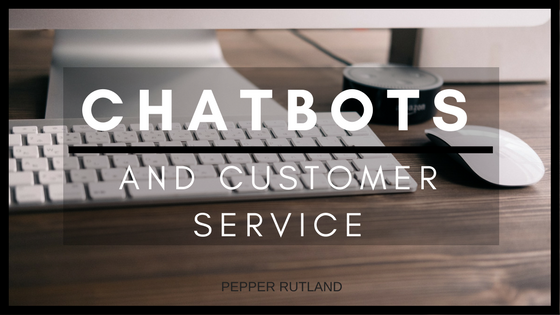Every entrepreneur and business owner knows that customer service is key to a lasting and successful project, initiative, or company. Being the department that possibly interacts the most with your audience, it’s highly likely that you have spent countless hours looking for the best customer service employees and tools to elevate your service to the next level. When the digital age arrived, however, the rules with customer service began to change. No longer were you greeted with a, “Hello, how can I help you?” from a real live person, but instead with a, “Please press 1 for more options” message coming from a robotic voice. While both methods are efficient, it’s important to note that the customer service rules have changed, and programs like chatbots will soon become the norm.
Chatbots were born out of a necessity to more efficiently police and traffic calls in high volumes. Quite frankly, it would be nearly impossible for a small office of people to handle transferring incoming calls for a large company such as Wells Fargo or Apple in a timely manner. And with the technology available, companies are able to save money by no longer needing to hire that team of switch-board experts. Chatbots are also attractive to businesses because they allow the customer to have total control of the direction of the call, instead of relying on who is on the other end to understand what they need.
At first, chatbots were not very sophisticated and often served as a point of frustration for customers. Since they work off of keywords and not actual context, customers had to readjust their own customer service visions and learn how to interact with the new technology. Chatbots have come a long way since then, and have been integrated with machine learning technology that allows for an easier experience thanks to advancements within artificial intelligence.
Chatbots are able to do more than just get a customer from one complaint to a solution, however. They also can yield valuable data and metrics that show where the majority of customer complaints come from. Further even from this, because of the real-time nature of chatbots replacing employees live-chatting with customers to troubleshoot, they’re able to point customers in the direction of other services on your site that they may be interested in as well, all from the keywords that you used during your chatbot inquiry. This will drive sales and increase customer satisfaction.
The bottom line behind chatbots and customer service is to not be afraid of the growing technology. There is a healthy balance between an in-person customer service rep and chatbots, and by learning about the best practice for both services, you can create a custom service platform that will serve your customers in the best way possible. And as technology continues to advance, look to chatbots to become even more capable of driving your business towards success in more areas than just customer service.

